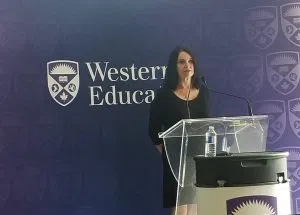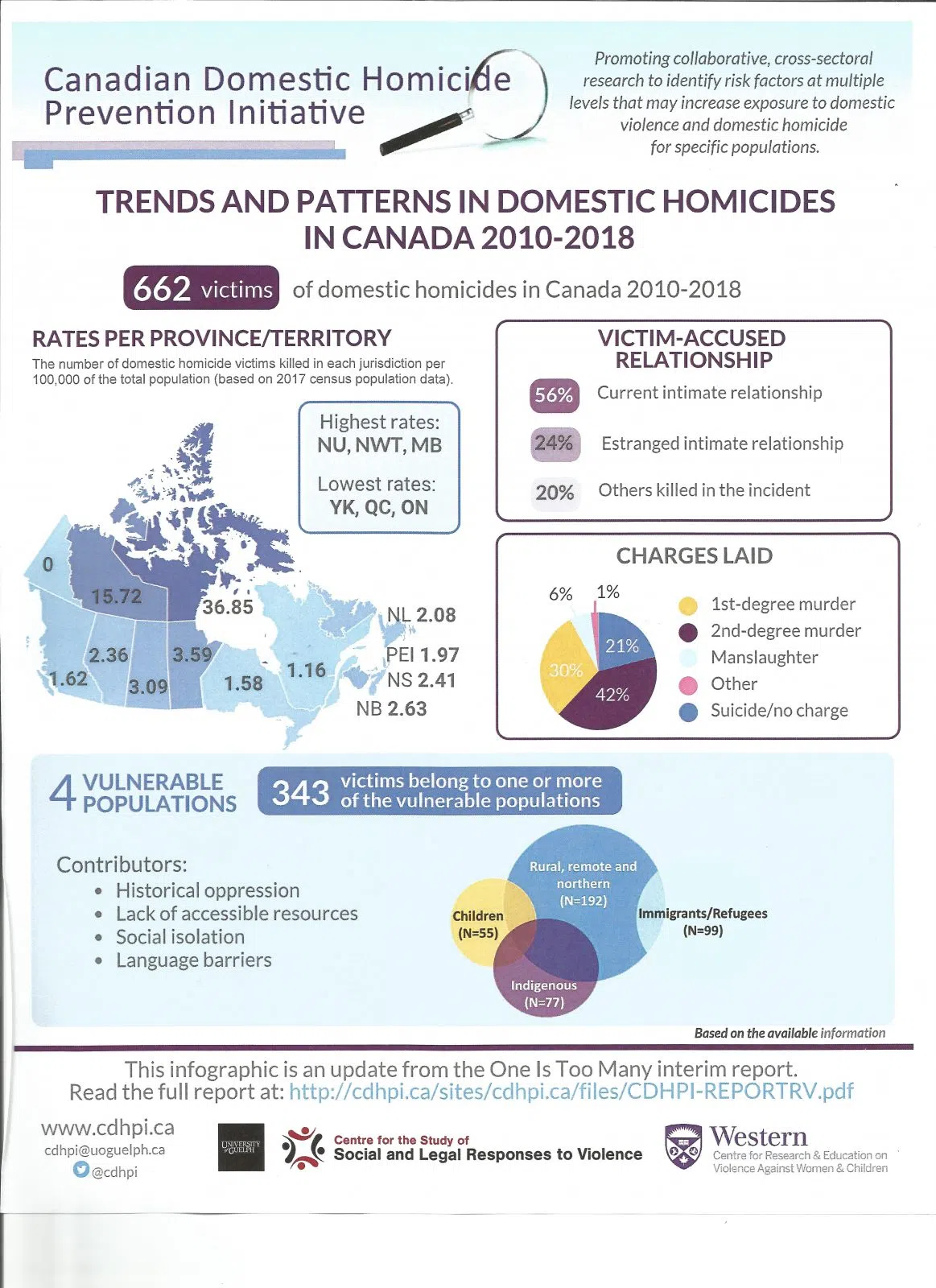Domestic homicide quietly takes the lives of approximately 70 Canadians per year. Dr. Peter Jaffe, a psychologist and professor with the faculty of education says these numbers are likely an underestimate of what they truly are.

Dr. Peter Jaffe announcing the Canadian Domestic Homicide Prevention Initiative for Vulnerable Populations. (CDHPIVP)
Researchers at Western University’s Centre for Research & Education on Violence Against Women and Children, as well with the University of Guelph, is trying to build a system to understand the risk factors that lead to domestic violence.
Jaffe explained that they are studying four different populations that are considered vulnerable: Indigenous, immigrants, rural and remote areas, and children exposed to domestic violence.
These populations are considered vulnerable because of their lack of resources awareness.
Jaffe says domestic homicides appear to be preventable in hindsight, though the risk factors may not seem obvious to those responding before hand.
“It has to be everyone’s business… so clearly we’ll be dealing with multiple ministries to share our findings”
Alison Irons a former RCMP officer, lost her daughter Lindsay Wilson to a domestic homicide back in 2013.
Irons spoke of her daughter’s death at the launch of the Canadian Domestic Homicide Prevention Initiative for Vulnerable Populations (CDHPVIP.)
“As a police officer and working in the field, I was actively speaking to my daughter about the risk factors three weeks before her murder… The problem was that neither she or I had any idea of the degree of his anger”
Irons said that her daughters ex boyfriend was able to find her easily because she was attending Nippissing University’s Muskoka campus, which is in a rural community.
Since the CDHPIVP started in 2015, efforts have been made to develop a database. Researchers have sought out domestic abuse survivors from the four vulnerable populations and listened to their stories to create more nuanced risk assessments, risk management and safety planning approaches.
Jaffe says their work is dedicated to learning from every tragedy, he equated their research to the similar work that happens after something like a plane crash
“one (life) is too many… These are real people, with real lives.”
For more information, or to participate in this project contact:
Anna-Lee Straatman
Toll-free 1-844-958-0522
astraat2@uwo.ca






